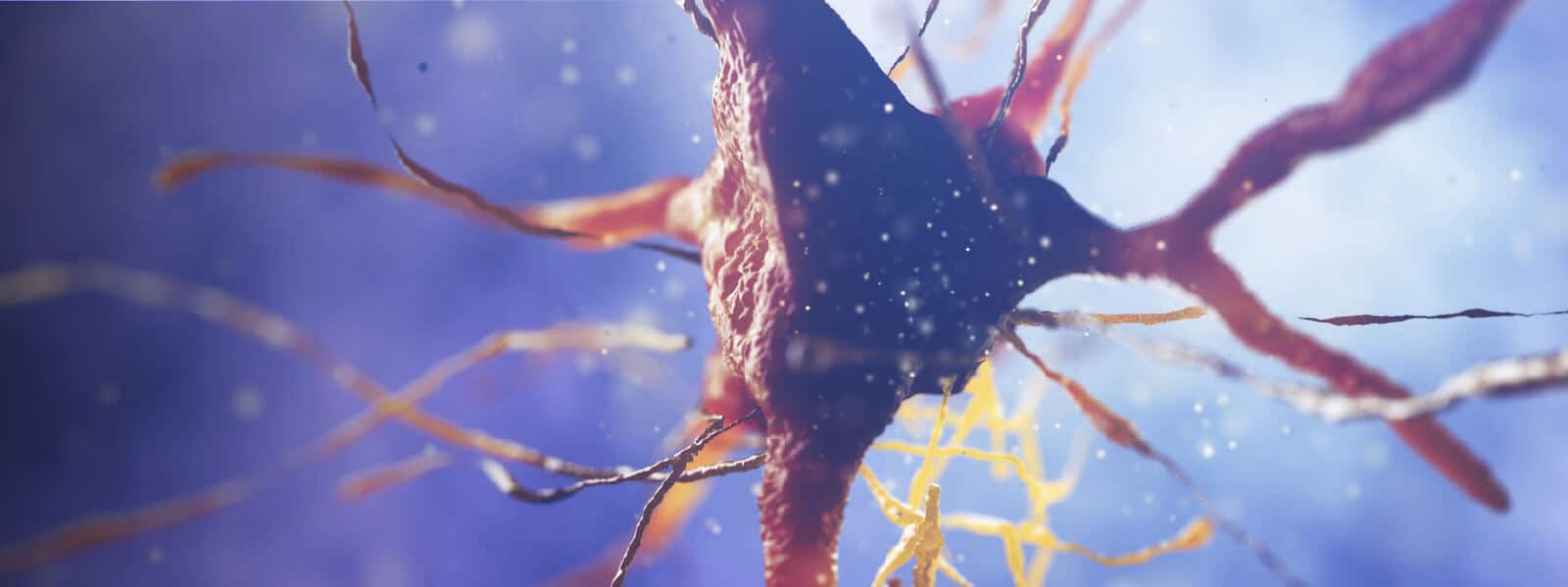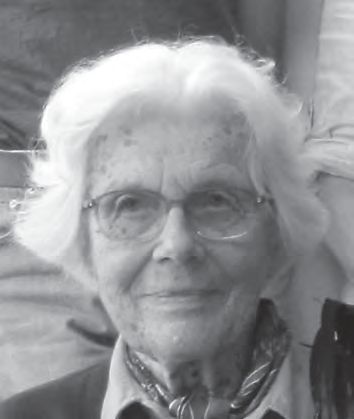
Physiology News Magazine
Obituary: Marianne Fillenz
1924 – 2013
Membership
Obituary: Marianne Fillenz
1924 – 2013
Membership
John Stein
https://doi.org/10.36866/pn.93.53

All Members of The Physiological Society will be sad to hear of the death of Marianne Fillenz at the age of 88 from cancer. Those of us in Oxford will miss her especially. After 60 years here she seemed to be a permanent fixture. We will miss her exceptional friendliness, her interest in everything from local gossip to the place of humanity in the universe, her positive outlook and her quizzical responses to incautious remarks. Generations of colleagues and students have cause to be grateful for her great patience and deeply conscientious attention to making sure that she understood their problems and that they understood what she was trying to tell them.
Marianne was born in 1924 in Timisoara, Romania. Her mother was Viennese and her father a Hungarian Jew. Correctly predicting the march of Nazism into Romania, in 1939 they left for New Zealand. The choice of New Zealand was completely accidental; Jewish friends had a spare form for New Zealand and passed it on to them. However what a fortunate accident! In New Zealand she met two of the most important influences in her life, the philosopher, Karl Popper, and the new Professor of Physiology at Otago, Jack Eccles, who had just arrived in New Zealand from working with Charles Sherrington in Oxford. Both were inspirational to her, and Marianne maintained their friendships, her deep interest in philosophy and in physiology, throughout her life.
Jack Eccles inspired her life choice of research physiology during her preclinical medical studies at the University of Otago and she never looked back. Her first paper was published in 1946 in the Journal of Neurophysiology; it was on the acetylcholine endplate potential in skeletal muscle. Such was her talent that Eccles persuaded her to interrupt or abandon her medical studies to undertake a DPhil in Physiology at Oxford. She remained intensely loyal to Jack. I remember that she was very helpful to me in the 1970s: as a newcomer to Magdalen College it was my duty to entertain Eccles when he came back to his old College after his retirement in Switzerland, and knowing him so well, she was able to reminisce about old times with him, which relieved me greatly. It is fitting that her last paper published in 2012 was on his life and work.
She arrived at Somerville College in 1950 and she remained in Oxford for the rest of her life. She did her DPhil with Sybil Cooper and David Whitteridge, studying receptors responding to stretch of the eye muscles. Her paper on this, published with Sybil in The Journal of Physiology in 1955, is a classic. How we know where our eyes are pointing is still contentious and the question of what sensory endings supply the brain with information about eye muscle length is still unsettled to this day, since typical muscle spindles are not found in these muscles. But Marianne’s work showed clearly that an eye muscle length signal is indeed supplied to the brain in the cat, and this was much later confirmed in humans.
This work taught Marianne how to record from single nerve fibres in peripheral nerves and from single nerve cells in the brain stem. I can attest to her skill because some years later she managed to teach numbskull me to record from single fibres in the vagus nerve. By this time she had moved her main interests from eye muscles and vision to her subsequent lifelong study of the autonomic nervous system and its control, and for the next 30 years she became the local expert on the anatomy and physiology of the autonomic nervous system.
Marianne was not content simply to use techniques she had already learnt; she eagerly sought out new methods that she thought might help her to understand the control of the autonomic nervous system better. So she was one of the first people to use and develop the technique of voltammetry to measure catecholamine release deep in the brain. Her paper on linear sweep voltammetry to measure dopamine release in the rat striatum is another classic, and her technique is still much in use today. With John Albery she went on to develop voltammetry electrodes for conveniently measuring many other substances, such as glucose, alcohol, amino acids, oxygen, CO2 and N2O.
As well as a highly productive research scientist, Marianne was a devoted and much loved teacher. After her DPhil she spent nine years as a college lecturer at St Hilda’s and as a University ‘Demonstrator’ in the Department of Physiology, and in 1963 she won a Tutorial Fellowship at St Anne’s College. She was a loyal member of St Anne’s for the rest of her life. With her wide interests spanning philosophy, social policy, politics and the arts (she was an excellent pianist, and regular concert goer) she was an extremely popular member of the SCR. Teaching mainly female undergraduate and graduate medical and physiology students, she was particularly keen to encourage her women students not to feel that family commitments would inevitably reduce their scientific productivity and she revelled in their successes when they came. She was a tenacious rationalist, so that both students and colleagues had to be on their toes. Her favourite phrase was, ‘Really, you believe that!’ after which you knew you were in for some hard defending. Her helpfulness, humanity and breadth of interests captivated her pupils and colleagues alike.
All this time not only was she very productive scientifically and teaching full-time, but also she brought up three children highly successfully and with the minimum of outside help. This was assisted greatly by the unusual amount of support given to her by her husband, John Clarke, who sadly predeceased her by two years. He was a strikingly tall and handsome Rhodes Scholar from Western Australia, studying hypothalamic control of the reproductive system, which he continued throughout his, also highly productive, life. They met during their first term at Oxford and they were married a year later. John was an amazingly ‘modern’ father who put the rest of us to shame; for instance he would seldom go to lunch in College as most donnish fathers did, but insisted on returning home to help Marianne give their children their lunch – he was meticulous in shouldering his half of all their child care responsibilities.
Marianne was also a keen Member of The Physiological Society and most of her early publications were originally in the form of The Physiological Society Proceedings. Many Members will remember her unfailing reasonableness and courtesy when she was chairing the often heated discussions following a presentation. We will all miss her greatly.
